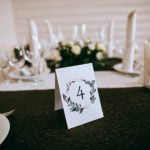What color to wear to a wedding is a common dilemma for many guests. Understanding the wedding dress code and exploring the different dress codes for weddings can help you navigate this decision with ease. Whether it’s a formal black-tie affair or a casual beach wedding, knowing the appropriate dress code will guide you in choosing the perfect color for your outfit.
When it comes to understanding wedding dress codes, it’s essential to familiarize yourself with the different levels of formality. From black-tie to cocktail attire, each dress code has its own set of guidelines that dictate what colors are appropriate for wedding attire. By understanding these distinctions, you can ensure that your chosen color aligns with the formality of the event.
In addition to dress codes, traditional wedding colors also play a significant role in determining what color to wear. Exploring the most common colors for wedding attire can provide insight into timeless and classic choices that are always safe bets. However, seasonal considerations and cultural or religious expectations also come into play when deciding on the perfect color for your wedding guest outfit.
Traditional Wedding Colors
When it comes to choosing the right color to wear to a wedding, it’s important to consider the most common and traditional colors for wedding attire. Understanding these traditional colors can help you make an informed decision when selecting your outfit for the big day. Here are some of the most common colors for wedding attire:
- White: Traditionally, white is reserved for the bride, so it’s best to avoid wearing this color as a guest to avoid drawing attention away from the bride.
- Black: While black is a classic and sophisticated color, it has historically been associated with mourning and is not always considered appropriate for weddings. However, many modern couples and wedding guests feel that black can be an elegant choice.
- Blue: Blue is a versatile and popular choice for wedding attire. Lighter shades like powder blue or periwinkle can be perfect for spring or summer weddings, while darker shades like navy can be great for fall or winter weddings.
When deciding what color to wear to a wedding, you may also want to consider the couple’s chosen wedding colors or theme. If they have specific colors they’ve incorporated into their invitations or decorations, you may want to avoid wearing those same colors in order to respect their choice.
Ultimately, when choosing a traditional color for wedding attire, it’s important to consider not only the season and theme of the wedding but also any cultural or religious considerations that may impact your color choice. By understanding these traditional wedding colors and taking these factors into account, you can ensure that you choose an appropriate and stylish outfit for the special occasion.
Seasonal Considerations
When attending a wedding, it’s important to consider the season when choosing the color of your outfit. The season plays a significant role in determining the appropriate colors to wear to a wedding. Whether it’s the vibrant shades of summer or the deep hues of winter, understanding seasonal considerations can help you select the perfect color for your wedding guest attire.
Summer
During the summer months, weddings often take on a bright and cheerful atmosphere. For summer weddings, it’s best to opt for light and airy colors to complement the warm weather. Pastel shades such as soft pinks, pale yellows, and mint greens are ideal choices for a summer wedding outfit. These colors not only evoke a sense of freshness but also add an elegant touch to your overall look.
Fall
As the leaves change and the air becomes crisp, fall weddings offer a unique color palette for wedding guest attire. Embracing rich and earthy tones such as deep reds, burnt oranges, and mustard yellows can complement the autumnal ambiance of a fall wedding. These warm and cozy colors not only reflect the season but also add depth and sophistication to your outfit.
Winter
For winter weddings, consider embracing deeper and more dramatic colors that are synonymous with the season. Jewel tones such as emerald green, sapphire blue, and ruby red can add an opulent touch to your winter wedding guest ensemble. These luxurious colors exude elegance and are perfect for creating a refined look during the colder months.
By considering seasonal nuances when selecting your wedding guest attire, you can ensure that you not only look stylish but also appropriate for the occasion. Understanding how different seasons influence color choices can help you make a tasteful and sophisticated statement at any wedding celebration.
Cultural and Religious Considerations
When attending a wedding, it is crucial to consider cultural and religious expectations when choosing the color of your attire. Different cultures and religions have specific meanings associated with certain colors, and it is important to respect these traditions. For example, in many Eastern cultures, the color red is considered auspicious and is often associated with good luck and prosperity.
It is commonly worn at weddings to symbolize joy and happiness. On the other hand, wearing black to a wedding may be seen as a sign of mourning in some cultures.
In addition to color symbolism, it is also important to consider any specific dress expectations based on religious customs. For instance, in Hindu weddings, guests are often expected to wear brightly colored clothing as it signifies celebration and joy. In contrast, traditional Christian weddings may have more flexibility when it comes to color choices for guests’ attire. Understanding these cultural and religious considerations ensures that you are respectful of the couple’s background and beliefs on their special day.
To navigate cultural and religious dress expectations, it’s always best to do some research or ask someone familiar with the customs if you are unsure about what color to wear to a wedding. When in doubt, opt for neutral tones such as cream, champagne, or pastel shades that are generally well-received across different cultures.
| Cultural Expectations | Respectful Attire Choices |
|---|---|
| Red signifies good luck in many Eastern cultures | Avoid wearing black if it symbolizes mourning |
| Brightly colored clothing symbolizes celebration in Hindu weddings | Choose neutral or pastel shades if unsure about specific cultural expectations |
The Power of Pastels
Pastel colors have long been a popular choice for wedding attire, exuding a timeless elegance that is perfect for any wedding event. These soft, delicate hues are not only versatile but also universally flattering, making them an ideal option for guests who want to look sophisticated and stylish without overshadowing the bride. Whether you’re attending a spring garden wedding or a summer beach ceremony, pastel colors offer a wide range of options to suit any setting.
Why Pastels Are Perfect for Weddings
Pastel colors such as blush pink, baby blue, mint green, and lavender are often associated with romance, femininity, and sophistication, making them an ideal choice for wedding guest attire. These soft hues create a sense of lightness and freshness, which can complement the joyous atmosphere of a wedding celebration. The subtle nature of pastel colors also allows guests to make a statement without drawing attention away from the bride and groom.
Choosing the Right Pastel Color
When deciding on what color to wear to a wedding, consider the season and time of day when the event will take place. For spring weddings, opt for soft pinks, lilacs, and baby blues to complement the blooming flowers and gentle breezes. Summer weddings call for brighter pastels such as lemon yellow or mint green that evoke the carefree spirit of the season.
For fall weddings, choose warm hues like peach or dusty rose to harmonize with the changing foliage. In winter, elegant pastels like icy blue or pale silver can add a touch of understated glamour to your look.
Styling Your Pastel Outfit
When wearing pastel colors to a wedding, it’s essential to pay attention to styling details such as accessories and footwear. To add visual interest to your outfit while staying true to the elegance of pastels, consider incorporating metallic accents or delicate floral patterns into your accessories. Nude or metallic shoes can help elongate your legs while complementing the softness of pastel hues.
Additionally, opting for simple yet elegant jewelry pieces will enhance your overall look without overwhelming the delicacy of pastel colors. Remember that less is more when styling pastels – aim for sophistication and grace in all aspects of your outfit.
Bold and Beautiful
When deciding what color to wear to a wedding, it’s important to consider how you can incorporate bold and vibrant colors into your outfit without overshadowing the bride and groom. One way to achieve this is by choosing a bold color that complements the wedding theme or venue. For example, if the wedding is in a garden setting, you may opt for a vibrant floral print dress or a bright jewel-toned outfit to match the natural surroundings.
Another option for incorporating bold and vibrant colors into your wedding guest outfit is by choosing statement accessories. This could include a bold statement necklace, colorful earrings, or a vibrant clutch. By adding small pops of color through your accessories, you can infuse your outfit with personality and style without being too overpowering.
It’s also worth considering the time of day when choosing bold and vibrant colors for a wedding outfit. Brighter colors like fuchsia, turquoise, or canary yellow are typically more suitable for daytime weddings, while rich jewel tones like emerald green, sapphire blue, or royal purple are better suited for evening affairs.
| Wedding Tips | Bold and Beautiful Outfit Ideas |
|---|---|
| Choose bold colors that complement the wedding theme or venue. | Vibrant floral prints |
| Add pops of color through statement accessories. | Bright statement necklace, colorful earrings |
| Fuchsia, turquoise for daytime weddings; emerald green, sapphire blue for evening affairs |
Neutral Territory
When it comes to choosing the perfect color to wear to a wedding, neutral colors are always a safe and timeless choice. Neutral colors such as black, white, grey, beige, and navy are versatile and can easily be dressed up or down depending on the formality of the wedding. Here are some tips for incorporating neutral colors into your wedding guest outfit:
- Black: A classic and sophisticated choice, black is suitable for almost any type of wedding. However, it’s important to avoid wearing a black dress to a daytime or casual wedding.
- White: Traditionally, white has been a color reserved for the bride. As a guest, it’s best to steer clear of wearing all-white attire out of respect for the bride.
- Grey: A subtle and elegant choice, grey can be a great option for both formal and semi-formal weddings. It pairs well with pastel accessories for a touch of color.
Neutral colors also provide the perfect canvas for adding pops of color through accessories. Consider incorporating colorful statement jewelry, shoes, or clutch bags to add visual interest to your outfit while still maintaining an overall neutral look.
When deciding what color to wear to a wedding, keep in mind that the season and time of day will also play a role in determining which neutral color is most appropriate. For example, lighter neutrals like beige may be more suitable for spring and summer weddings, while darker neutrals like navy might be better suited for fall and winter weddings.
Accessorizing Your Look
In conclusion, choosing the right color to wear to a wedding can be an important decision as a guest. Understanding the dress code, traditional wedding colors, and seasonal considerations can help you make the perfect choice for the event. It’s also crucial to consider any cultural or religious expectations and dress accordingly to show respect.
When it comes to accessorizing your wedding guest outfit, adding the perfect pop of color can elevate your look. Whether it’s through jewelry, a stylish clutch, or a statement pair of shoes, incorporating a complementary or contrasting color can add depth and personality to your attire. This is especially useful if you’ve chosen a neutral or pastel-colored outfit and want to inject some vibrancy into your ensemble.
Remember that ultimately, the most important thing is to feel comfortable and confident in what you wear. Whether you choose a classic pastel, a bold and vibrant hue, or opt for timeless neutrals with a pop of color in your accessories, what matters most is that you feel great in what you’re wearing while respecting any guidelines set by the couple getting married.
Frequently Asked Questions
Is It OK to Wear Black to a Wedding?
It is generally considered a fashion faux pas to wear black to a wedding, as it is traditionally associated with mourning and funerals. However, modern etiquette has become more flexible, and wearing black to a wedding is now more acceptable, especially if paired with colorful accessories.
What Should I Wear to a Wedding as a Guest?
As a wedding guest, it’s important to dress in appropriate attire that fits the formality of the event. For a traditional wedding, opt for a cocktail dress or a suit and tie. For a casual or beach wedding, consider wearing a sundress or light-colored suit. Always avoid anything too revealing or attention-grabbing.
What Is an Appropriate Color to Wear to a Wedding?
When choosing a color to wear to a wedding, it’s best to stick with cheerful and festive tones like pastels, floral prints, or bright jewel tones. Avoid wearing white (to avoid upstaging the bride) and overly dark colors like black (which can be seen as inappropriate for celebrations).
Ultimately, choose colors that make you feel confident and comfortable while respecting the couple’s special day.

Welcome to my blog about home and family. This blog is a place where I will share my thoughts, ideas, and experiences related to these important topics. I am a stay-at-home mom with two young children. I hope you enjoy reading it! and may find some helpful tips and ideas that will make your home and family life even better!





